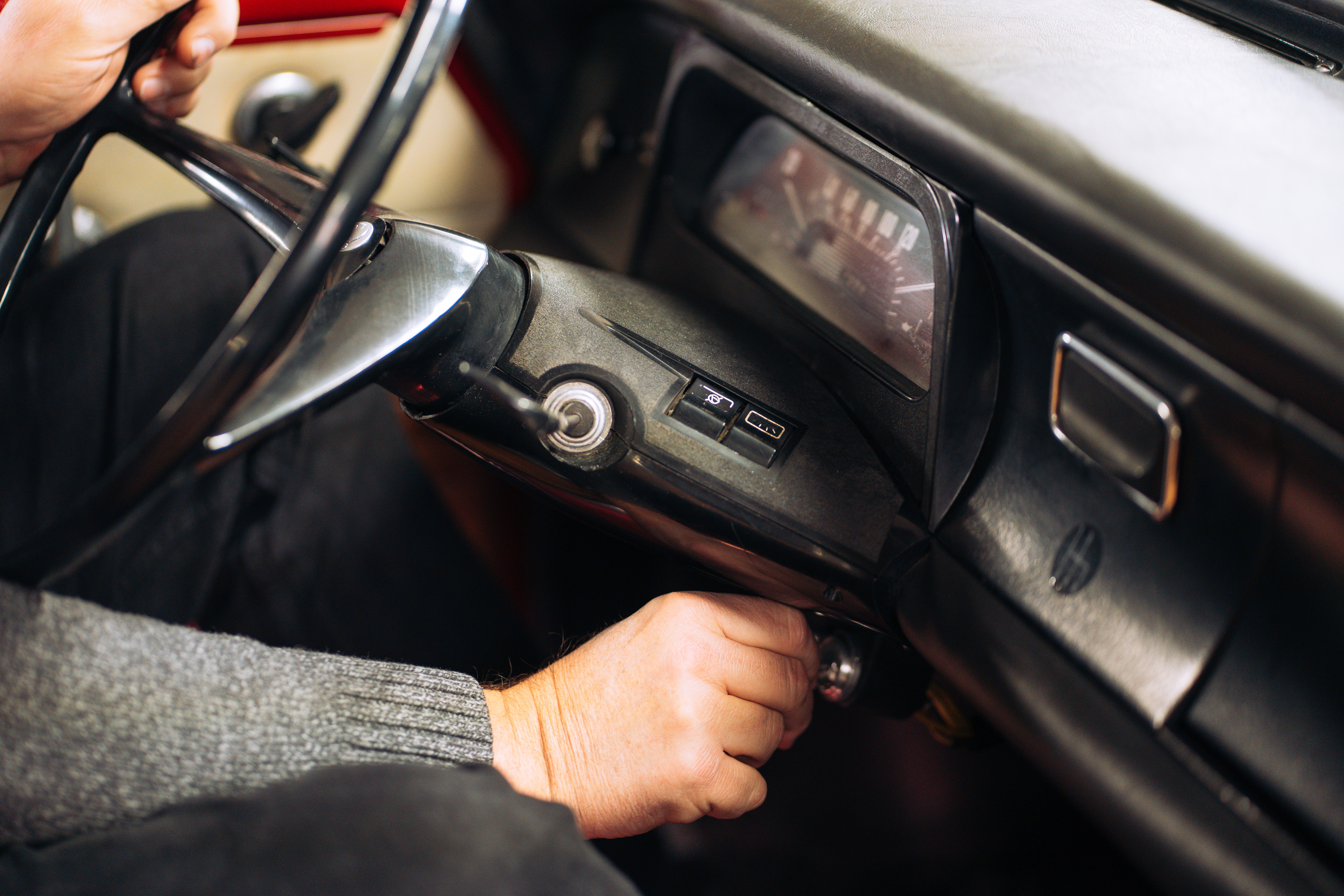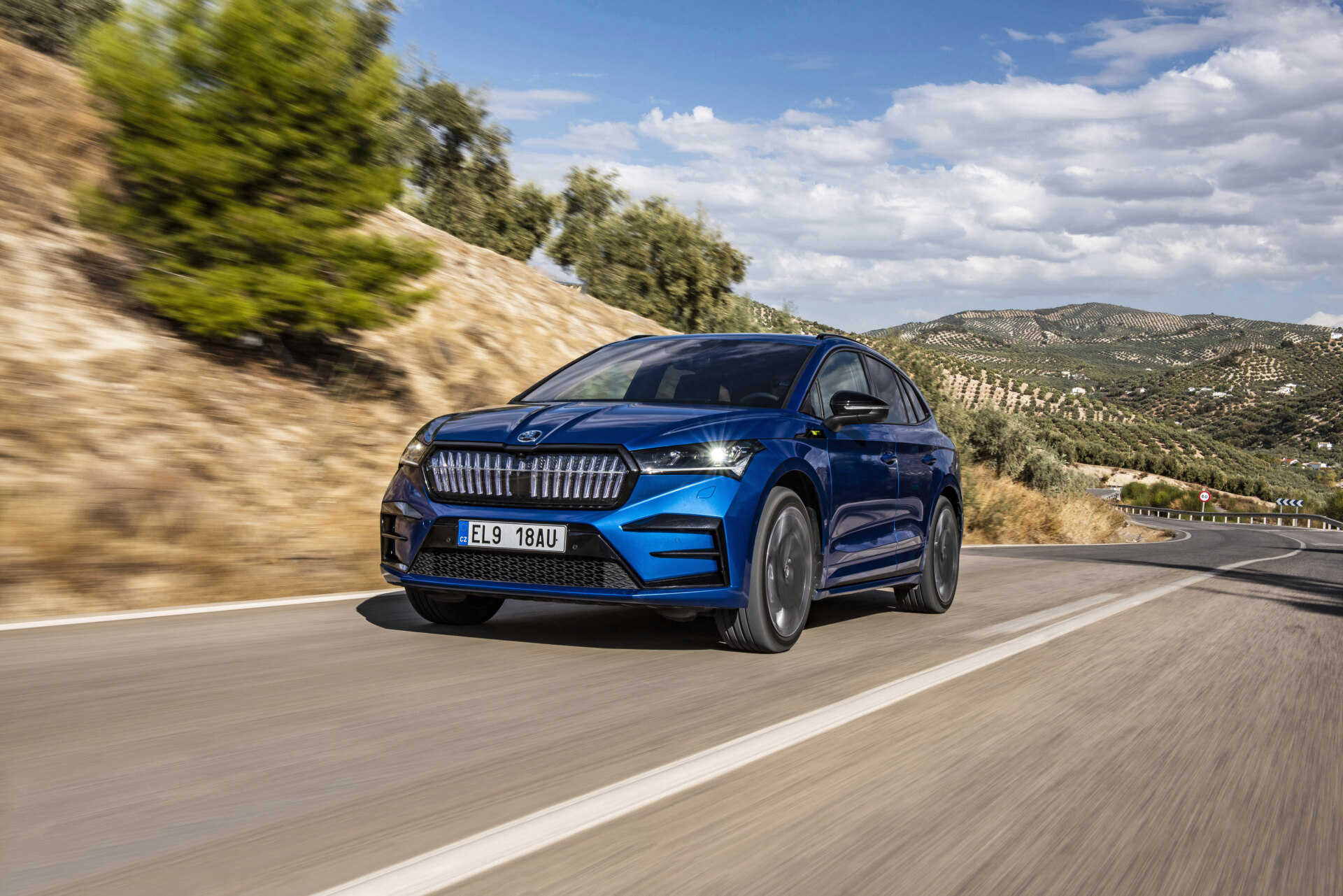The arrival of the starter
Around a hundred years ago, electric starters began to be used to a greater extent in cars hailing from Mladá Boleslav. As early as the turn of the 1920s and 1930s, a button was available on L&K cars that fed an electric current into the “toggle starter”. The toggle starter’s pinion was clutched to the toothed ring of the engine flywheel. A later innovation was that the pinion disengaged on the longitudinal axis of the starter. This movement was most reliably activated by a mechanical device, usually a pedal on the floor. This was the case with the pre-war Škoda Rapid or the “Tudor”, the nickname for the Škoda 1101/1102 from the 1940s.
 The pre-war Škoda Rapid and the “Tudor” were started with a small pedal to the right of the accelerator.
The pre-war Škoda Rapid and the “Tudor” were started with a small pedal to the right of the accelerator.
Pressing down the pedal also closed the electric circuit, so the starter motor started turning. When the pedal was released, a return spring disengaged it and the circuit was broken again. The Tudor’s successor, a popular predecessor to the Octavia nicknamed the “Spartak” (the Škoda 440 of the mid-1950s), used a rod under the steering wheel instead of a pedal.
 Transformation of starter systems after the war - here in a Spartak model.
Transformation of starter systems after the war - here in a Spartak model.
More luxurious cars, though, had pre-engaged starters from the 1920s onwards. One real rarity is the Škoda Hispano-Suiza, the first of which was used by the Czechoslovak president T. G. Masaryk for ten years. The “Hispano” was equipped with two batteries, and each of the independent electrical circuits had its own button on the dashboard. The driver could choose which one to press. If the batteries were weak, he activated both simultaneously.



















